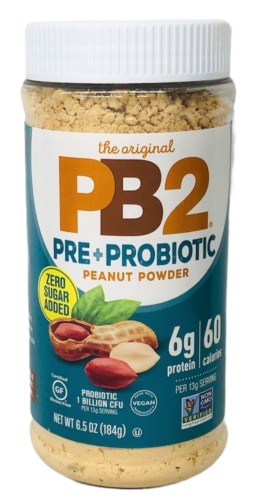 A growing body of evidence supports such an approach. For example, a 2019 study of more than 1,300 infants in England and Wales found that children introduced to allergenic foods at 3 months of age were less likely to develop food allergies than infants solely breastfed for the first 6 months of their lives.
Just 19.2% of children introduced to allergenic foods early in life went on to develop food allergies. That compares to 34.2% of children who later developed food allergies after not being exposed to allergenic foods at a very young age.
A growing body of evidence supports such an approach. For example, a 2019 study of more than 1,300 infants in England and Wales found that children introduced to allergenic foods at 3 months of age were less likely to develop food allergies than infants solely breastfed for the first 6 months of their lives.
Just 19.2% of children introduced to allergenic foods early in life went on to develop food allergies. That compares to 34.2% of children who later developed food allergies after not being exposed to allergenic foods at a very young age.
PB2 Peanut Powder with Pre + Probiotics Original Description
-
Rich in Taste - East to Enjoy & Wonderfully Healthy
-
Pre + Probiotic - 1 Billion CFU per Serving
-
Zero Sugar Added
-
6g Protein per Serving
-
60 Calories per Serving
-
Certified Gluten Free
-
Certified Vegan
-
Non-GMO Project Verified
-
Kosher
PB2 Pre + Probiotic Peanut Powder is peanut butter reimagined! Our PB2 supplemented with prebiotics and probiotics is a more functional twist of our flagship product. Pre and Probiotics are added for digestive support, a dash of monk fruit for sweetness (no added sugar) and dash of salt to help the roasted peanut flavor pop. The result is peanut powder with zero added sugar, 1billion CFU of probiotic per serving, and 6g of plant protein per serving.
The Original Powdered Peanut Butter - Now Zero Added Sugar and Pre + Probiotics!
The subject of powdered peanut butter tends to create a lot of questions. One we hear frequently is, Why should I make the switch to powdered? Although PB2 and traditional peanut butter are alike in flavor, there a few things that we think make PB2 the better choice for your busy lifestyle. Here’s our reasoning:
-
Fewer calories and less fat: Compared to its traditional counterparts, PB2 has 90% less fat and 70% fewer calories, all while still retaining the delicious peanut butter taste that we know and love.
-
It’s protein-packed: Like its traditional counterparts, PB2 packs in the protein per serving. Depending on which variety of PB2 you’re using, you’ll find 6 grams of protein per 13-gram serving. Also, it’s easy to replace the protein powder in your morning smoothie with PB2, due to the similarity in the powder consistency.
-
More versatility in the kitchen: Because of its powdered form, it’s easy to incorporate PB2 into all of your favorite peanut butter recipes. To keep things simple, we’ve sorted PB2’s best uses into three categories: bake, blend and mix.
-
It’s kosher, vegan, and gluten-free: Not only are PB2 products void of any GMOs, they also work well with a wide variety of dietary preferences.
*These statements have not been evaluated by the Food and Drug Administration. This product is not intended to diagnose, treat, cure, or prevent any disease.
| Amount Per Serving | % Daily Value | |
| Calories | 60 | |
| Total Fat | 1.5 g | 2% |
| Saturated Fat | 0 g | 0% |
| Trans Fat | 0 g | |
| Cholesterol | 0 mg | 0% |
| Sodium | 100 mg | 4% |
| Total Carbohydrate | 5 g | 2% |
| Dietary Fiber | 2 g | 7% |
| Total Sugars | 1 g | |
| Includes 0g Added Sugar | 0% | |
| Protein | 6 g | 12% |
| Vitamin D | 0 mcg | 0% |
| Calcium | 10 mg | 0% |
| Iron | 0.3 g | 2% |
| Potassium | 140 mg | 2% |
Contains: Peanuts




